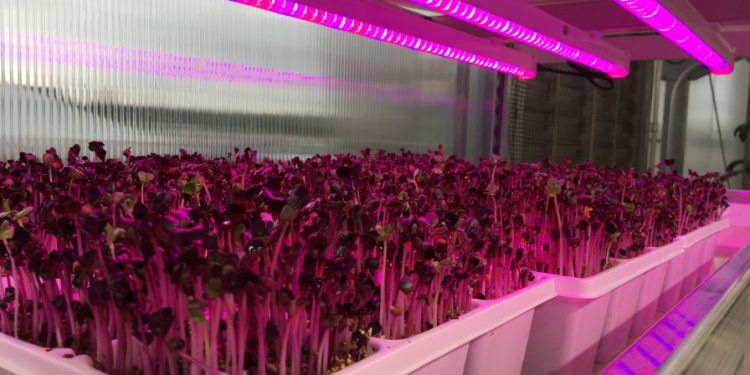#Horticulture #AgriculturalInnovation #LEDTechnology #CropManagement #SustainableFarming #CEAIndustry #LightingResearch #GreenhouseCultivation
Lighting the Path: Recent Advances in Horticultural Lighting Research
In the ever-evolving landscape of controlled-environment agriculture (CEA), horticultural lighting stands out as a beacon of innovation. This article explores recent research findings on light spectrum and intensity, shedding light on the transformative role of LEDs in enhancing crop outcomes.
Light Spectrum Research: Unveiling the Impact of Far-Red Light
Dr. Nathan Eylands, an assistant professor at the University of Minnesota, investigates the influence of far-red light on horticultural outcomes. His research categorizes plants into far-red tolerators and intolerant ones, revealing insights into crop architecture and marketable factors. The study highlights the delicate balance between optimal growth and preserving essential plant attributes.
Dynamic Spectra: A New Frontier in Crop Maturation
Dr. Eylands pioneers research on dynamic spectra, aiming to tailor light recipes as crops mature. By introducing blue light at specific growth stages, potential enhancements in anthocyanin content and other secondary metabolites are explored. This innovative approach mimics adjustable-spectrum lights, providing a cost-effective alternative for commercial growers.
Light Intensity Research: Illuminating the Foundations
Dr. Kellie Walters from the University of Tennessee emphasizes the importance of optimizing light intensity before delving into light quality. Her research demonstrates the nuanced relationship between light intensity and crop responses, challenging the traditional focus on spectral differences. Dimmable lighting fixtures and dynamic intensity manipulation emerge as potential game-changers for CEA operators.
Balancing Act: The Intersection of Light Intensity and Quality
Walters’ study on green-leaf butterhead lettuce reveals the intricate interplay between light intensity and carotenoid content. While higher intensities enhance yield, careful consideration is needed to avoid compromising secondary metabolite concentrations. The article underscores the need for a foundational understanding of light intensity, recognizing its role in resource input and overall output.
Collaborative Futures: Bridging Academia and Industry for Sustainable Growth
As the CEA industry advances, collaboration between academia and industry becomes pivotal. Acknowledging the complexity of environmental and cultural factors, researchers stress the importance of robust data analysis. The ongoing synergy between academia and industry promises a sustainable and greener future for controlled-environment agriculture.
Navigating the Illuminated Path Forward
In the ever-evolving landscape of horticultural lighting, the pursuit of optimal crop growth unfolds with promising avenues in dynamic spectra and light intensity management. As researchers illuminate the path forward, the collaborative efforts of academia and industry offer a glimpse into a sustainable and efficient future for controlled-environment agriculture.












